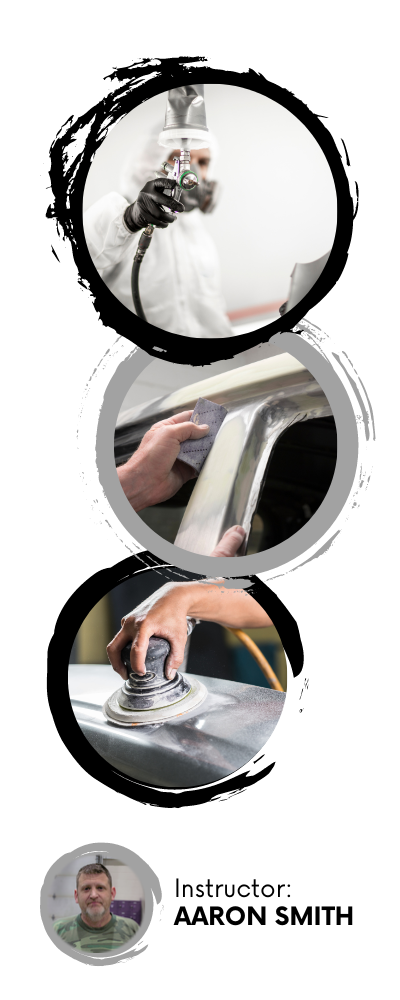
Wow! That car looks good! How do I do that?
If you have ever asked yourself that question, Auto Collision has the answers. Learn about all aspects of collision repair in this hands-on program. Whether it is aluminum or plastic repair, welding, or painting we have you covered. Maybe you want to learn about the equipment and terminology that is used in the industry or learn how to work on your own car, you can learn that.
Courses
Principles of Collision Repair
Principles of Collision Repair provides students an overview of the operating, electrical, and general maintenance systems of the modern automobile. Students will be introduced to the safety and operation of equipment and tools used in the automotive collision industry.
Automotive Body Repair
Automotive Body Repair provides students with an understanding of the materials, measuring, welding, and information resources applicable to collision repair. Students will study steel and aluminum dent repair, including the welding practices commonly performed within an automotive repair environment. Students will gain basic skills and knowledge in oxy-fuel welding, cutting, brazing and plasma cutting, gas metal arc welding, squeeze type resistance welding, exterior panel welding and I-CAR welding test preparation.
Plastic Body Repair and Paint Fundamentals
Plastic Body Repair and Paint Fundamentals introduces the types of fiberglass and plastic materials used in auto body repair and considerations for automotive painting. Students will explore methods for repairing fiberglass and plastic damage, like welding, reinforcing, repairing holes, and retexturing plastic. Students will be asked to demonstrate the proper use of primer sand sealers, spraying techniques, and an understanding of various paint finishes.
Collision Repair Capstone
This course further explores important skills and competencies within the Automotive Body Technology Pathway. Topics include Automotive Painting Technology, Collision Damage Appraising, and Fiberglass Plastic Repair.

